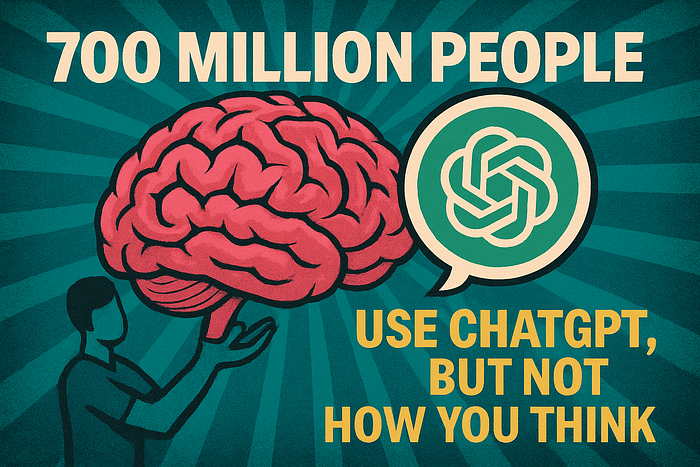Top 5 Essential Big Data Frameworks for Modern Data Analytics
Last Updated on July 25, 2023 by Editorial Team
Author(s): Vijay Singh Khatri
Originally published on Towards AI.
As there are no signs of slowing down data generation, the amount available today is immeasurable. Hence, traditional data processing software can't process such amounts of data and derive insights timely. This is where the role of big data frameworks comes in.
The more advancements in technology, the more complex and large unstructured and structured datasets. The traditional processing methods and tools cannot process and analyze these datasets due to their size and complexity.
Hence, companies have shifted to special software — big data frameworks with high data processing and storage capabilities.
Making a perfect choice of an extensive data framework is tricky, with multiple options available. This article has narrowed down the long list to help you choose the best one. But before that, let us have a brief introduction to what an extensive data framework means.
What are Big Data Frameworks?
They are tools that simplify processing big data (a term used to refer to vast and complex data volumes containing both structured and unstructured petabytes and exabytes of data). They do it more quickly and efficiently while maintaining security. Generally, these tools are open-source and an option for paid support.
Now, you may have a question — What is data (big data) processing?
It is collecting raw and noisy datasets and converting them into an understandable format. It involves a series of steps — collecting, cleaning, organizing, transforming, and analyzing data to derive valuable insights and, finally, presenting them in a way understandable by laymen.
Businesses leverage the insights derived from datasets to make strategic decisions, resulting in company growth.
Big data frameworks simplify this series of steps in data processing by providing a basic framework that helps them make the most out of big data in less time.
Let us now dive deeper into our list!
5 Best Big Data Frameworks To Use in 2023
1. Hadoop
Also known as Apache Hadoop, it is one of the oldest and most widely used frameworks for processing big data distributedly across various clusters of computers. This distributed storage and processing of big data leverages the MapReduce programming model.
All the modules in Hadoop are designed by assuming that hardware failures are common and the framework itself should handle them.
There are four components in the Hadoop ecosystem:
- HDFS: Stands for Hadoop Distributed File System, a file system that stores data on computers in a cluster. In simple words, it is a storage unit of Hadoop.
- YARN: An acronym for Yet Another Resource Negotiator, a resource manager. It manages all computing resources in clusters and uses them to schedule user applications.
- MapReduce: A programming model for processing data.
- Hadoop Common: Hosts libraries and utilities and provide them to the above Hadoop components as required.
Hadoop splits large datasets into small blocks and distributes them across different nodes (computers) in a cluster. All nodes in a cluster process data parallelly.
The primary idea of this framework is rather than using a single computer to process data, it uses multiple computers, distributes data across them, and processes it simultaneously.
Pros
- A cost-efficient model
- Highly scalable and flexible
- High-level performance and speed compared to traditional database management systems.
- Fault-tolerance
- High throughput
Cons
- Not efficient for small files
- Vulnerability to attacks
- Lack of security
- Supports only batch processing
2. Apache Spark
It is a multi-language analytics engine for big data processing. It works well with very massive datasets. Along with batch processing, it supports stream processing. It distributes data across multiple computers itself or with the help of other distributing tools.
The framework provides APIs in various programming languages — Java, Scala, Python, and R. It supports executing distributed ANSI SQL queries quickly for dashboarding and ad-hoc reporting.
Spark uses in-memory caching, which makes it a superfast framework than other cluster computing systems, such as Hadoop. The data processing in memory is just one-step — reading data into memory, performing operations, and writing the results back.
Resilient Distributed Dataset (RDD) forms the architectural basis for Spark. It is a read-only multi-set of data items spread across different machines in a cluster.
Spark consists of the following core components:
- Spark Core: An execution engine and the heart of Spark, which forms the basis for all other components. It manages task dispatching, I/O operations, and task scheduling.
- Spark SQL: Built on top of Spark core, Spark SQL performs distributed processing on data. It provides access to various data sources — HDFS, Hive, etc.
- Spark Streaming: A library to process streaming data. It can stream gigabytes per second. It splits data into mini-batches and transforms them into RDDs.
- MLlib: A machine learning containing different ML algorithms.
- GraphX: A distributed graph-processing framework.
Pros
- Breakneck speed
- Easy to use
- Provides APIs in Java, Python, R, and Scala
- Dynamic in nature
- Advanced analytics
Cons
- No automatic optimization
- Lack of its own file management system
- Difficulties while handling small files
- Not the right fit for a multi-user environment
3. Apache Hive
Hive is an open-source distributed data warehouse system built on top of Apache Hadoop. It supports reading, writing, and analyzing petabytes of data stored in distributed storage. You get an SQL-like interface called HiveQL to query data stored in databases and file systems that integrate with Hadoop.
Traditional databases can only process small to medium volumes of data. On the other hand, Hive leverages batch processing, like Hadoop, to process data quickly across a distributed database.
The following are the major components of Hive:
- Metastore: Stores metadata (schema and location) for each table.
- Driver: Acts as a controller that receives HiveQL statements.
- Compiler: Compiles HiveQL queries, i.e., converts queries into an execution plan.
- Optimizer: Performs various transformations on the execution plan.
- Executor: Executes tasks.
- CLI and Thrift Server: A command line interface provides a user interface for users to interact with Hive. Thrift is a server allowing external users to interact with Hive over a network.
Pros
- Cost-effective
- Incredibly fast
- Efficient and reliable
- Anyone having familiarity with SQL can work with Hive
Cons
- Tricky to use for beginners
- Less responsive on mobile devices
- Does not supports unstructured data
4. Apache Storm
Storm is a free and open-source real-time distributed big data processing system. It makes it easy to process unbounded streams of data. It processes data in a fault-tolerant and horizontally-scalable way. While simple to use, Storm is compatible with any programming language.
Furthermore, it works well with your queueing and database technologies. It is a stateless framework with the highest ingestion rates. It leverages Apache Zookeeper to maintain distributed environment and cluster state.
The structure of Storm is like a topology of the directed acyclic graph (DAG). Spouts and bolts act as graph vertices. Meanwhile, edges are named streams and direct data from one node to another. The topology of Apache Storm uses streams of data and processes them in arbitrarily complex ways. It repartitions streams at each stage of computation.
Apache Strom comprises two critical components:
- Nodes: A Master Node executes a daemon Nimbus that assigns tasks to machines and supervises their performance. A Worker Node runs a daemon Supervisor that assigns tasks to other worker nodes.
- Components: Consists of three elements — Topology, Stream, and Spout. The topology is a network made up of streams and spouts.
Pros
- An affordable solution
- Flexibility to choose any programming language
- Highly scalable
- Assures the delivery of data even in case of node downtime.
Cons
- Setup and installation are tricky
- No framework-level supports; projects need to be started from scratch.
- Not ideal for small-scale apps
5. Apache Samza
It is a distributed stream processing framework, allowing users to build real-time applications that can process data. It is developed to work well in conjunction with Apache Kafka to retrieve data for real-time processing.
Samza ensures fault tolerance, stateful processing, and isolation. It performs continuous computation and provides immediate output. Hence, the response time results in sub-seconds.
Further, the framework functions well with several deployment options, like YARN, Kubernetes, etc. Another advantage it provides is that you can perform batch and stream processing with just a single codebase.
You get various APIs to develop your applications — low-level, Streams DSL, Samza SQL, and Apache BEAM APIs. Along with Apache Kafka, Samza integrates with HDFS, AWS Kinesis, Azure Eventhubs, K-V stores, and ElasticSearch.
Pros
- Horizontally scalable
- Easy to use
- Write Once, Run Anywhere
- High performance
- Pluggable architecture
Cons
- Only supports JVM languages.
- Not ideal for low-latency processing
Make the Most Out of Data With These Big Data Frameworks!
There is unprecedented growth in the generation of data as a result of technological advancements. Traditional data processing tools are not capable of managing complex and large datasets. Hence, there was a need for efficient and reliable platforms, which resulted in the inception of big data frameworks.
These frameworks help process complex and humungous datasets quickly and efficiently, helping businesses make timely strategic decisions. All of the frameworks mentioned above are free and open-source.
So, if you plan to become a data science professional, familiarity with at least any of these frameworks is essential.
Join thousands of data leaders on the AI newsletter. Join over 80,000 subscribers and keep up to date with the latest developments in AI. From research to projects and ideas. If you are building an AI startup, an AI-related product, or a service, we invite you to consider becoming a sponsor.
Published via Towards AI
Take our 90+ lesson From Beginner to Advanced LLM Developer Certification: From choosing a project to deploying a working product this is the most comprehensive and practical LLM course out there!
Towards AI has published Building LLMs for Production—our 470+ page guide to mastering LLMs with practical projects and expert insights!

Discover Your Dream AI Career at Towards AI Jobs
Towards AI has built a jobs board tailored specifically to Machine Learning and Data Science Jobs and Skills. Our software searches for live AI jobs each hour, labels and categorises them and makes them easily searchable. Explore over 40,000 live jobs today with Towards AI Jobs!
Note: Content contains the views of the contributing authors and not Towards AI.
















